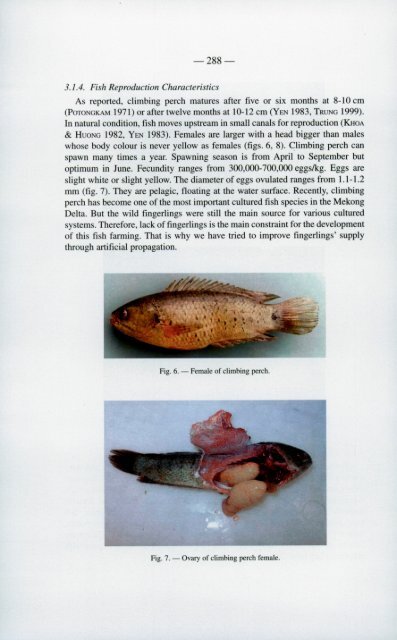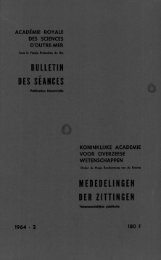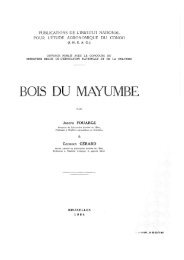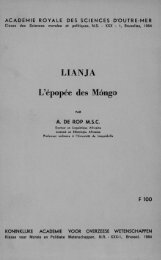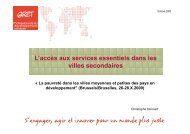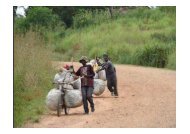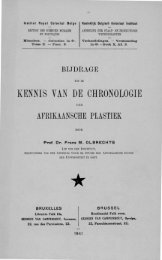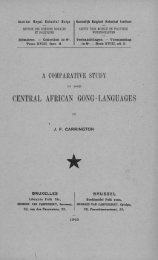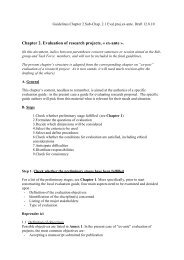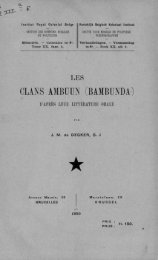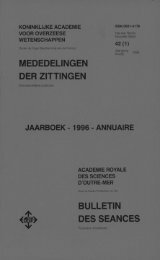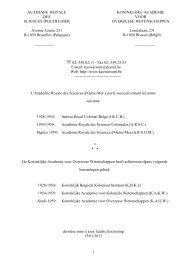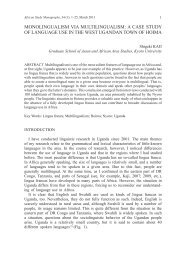KONINKLIJKE ACADEMIE VOOR OVERZEESE WETENSCHAPPEN ...
KONINKLIJKE ACADEMIE VOOR OVERZEESE WETENSCHAPPEN ...
KONINKLIJKE ACADEMIE VOOR OVERZEESE WETENSCHAPPEN ...
Create successful ePaper yourself
Turn your PDF publications into a flip-book with our unique Google optimized e-Paper software.
— 288 —<br />
3.1.4. Fish Reproduction Characteristics<br />
As reported, climbing perch matures after five or six months at 8-10 cm<br />
( P o t o n g k a m 1971) or after twelve months at 10-12 cm ( Y en 1983, T r u n g 1999).<br />
In natural condition, fish moves upstream in small canals for reproduction ( K h oa<br />
& H u o n g 1982, Y e n 1983). Females are larger with a head bigger than males<br />
whose body colour is never yellow as females (figs. 6 , 8). Climbing perch can<br />
spawn many times a year. Spawning season is from April to September but<br />
optimum in June. Fecundity ranges from 300,000-700,000 eggs/kg. Eggs are<br />
slight white or slight yellow. The diameter of eggs ovulated ranges from 1.1-1.2<br />
mm (fig. 7). They are pelagic, floating at the water surface. Recently, climbing<br />
perch has become one of the most important cultured fish species in the Mekong<br />
Delta. But the wild fingerlings were still the main source for various cultured<br />
systems. Therefore, lack of fingerlings is the main constraint for the development<br />
of this fish farming. That is why we have tried to improve fingerlings’ supply<br />
through artificial propagation.<br />
Fig. 6. — Female of climbing perch.<br />
Fig. 7. — Ovary of climbing perch female.


